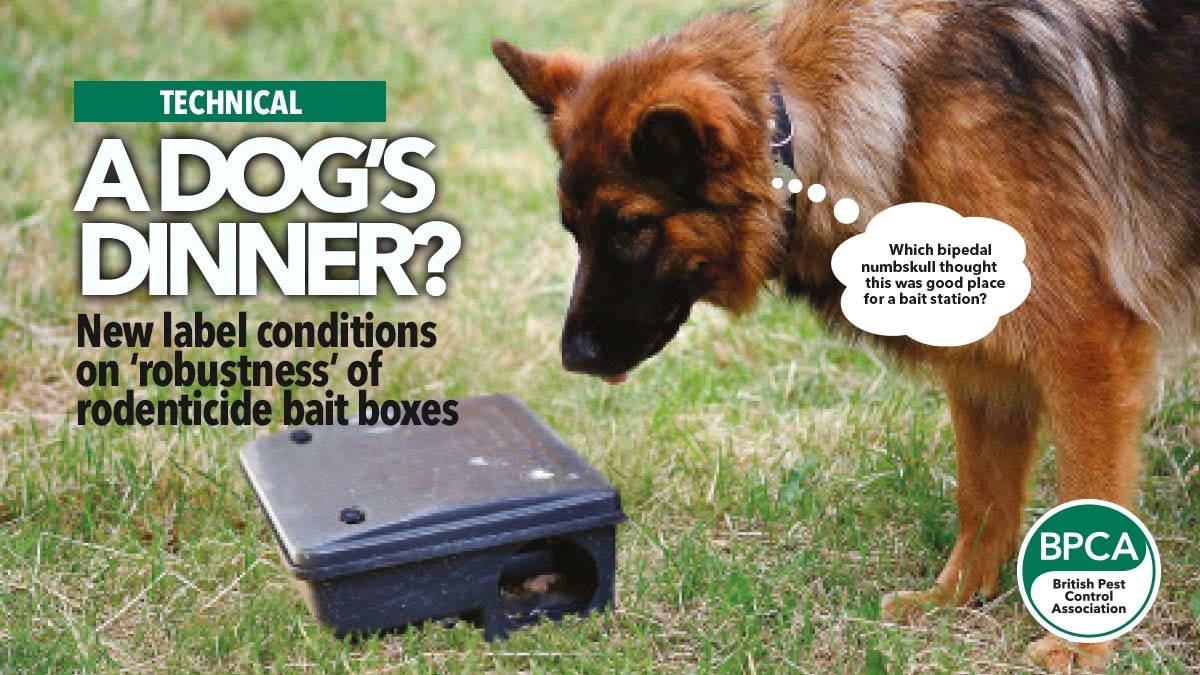Technical | PPC106
Changes required by the Health and Safety Executive (HSE) to legally binding instructions on rodenticide product labels have significant implications for users in pest control, farming and gamekeeping.

Updated text will appear on labels from January, according to the chairman of the Campaign for Responsible Rodenticide Use (CRRU), Dr
Alan Buckle.
HSE requires that tamper-resistant bait stations must now be:
- Strong enough to prevent entry or destruction by dogs
- Strong enough to prevent entry or destruction by children under six years of age using hands, feet or objects reasonably expected to be available in the use area (eg household objects, toys etc)
- Lockable or sealable so that children and dogs cannot gain access through the opening or mechanisms used to fill the bait compartments
- And for use ‘outdoors around buildings’: resistant to destruction or weakening from exposure to typical non-catastrophic weather (eg direct sunlight, extremes of temperature and humidity, rain, snow etc).
How do you tell if your bait box is tough enough?
HSE has not specified a specific testing regime, which means it’ll be largely down to your own risk assessment to decide if a box is tough enough to meet the criteria.
The simplest way to do your due diligence is to ask your supplier if your existing bait boxes meet the new criteria.
Is this the end of plastic bait boxes?
No. HSE had not stipulated what the box should be made of. It just needs to be tamper-resistant and fit for its purpose.
What about open trays?
No. Open trays that are, for example, secured in wall cavities or a place where there is no risk of non-target access, are still appropriate in certain situations.
Trained professional pest controllers continue to have the option to use rodenticide in ‘protected bait points’. It’s only when you choose a bait station that you’re required to meet the new criteria.
Couldn’t a big enough dog break almost any box?
Well, yes. The guidance is a bit vague, which means that manufacturers and pest professionals can use their professional judgment.
If you and your manufacturer believe that your tamper-resistant bait station is fit for purpose, then you’re complying with the legislation.
Got any questions?
If in doubt, the best move you can make is to consult either the supplier or bait station manufacturer for assurances that your boxes meet the new criteria.
If you’re a BPCA member and you have any concerns or queries, get in touch with our technical team.
technical@bpca.org.uk

Source: PPC106